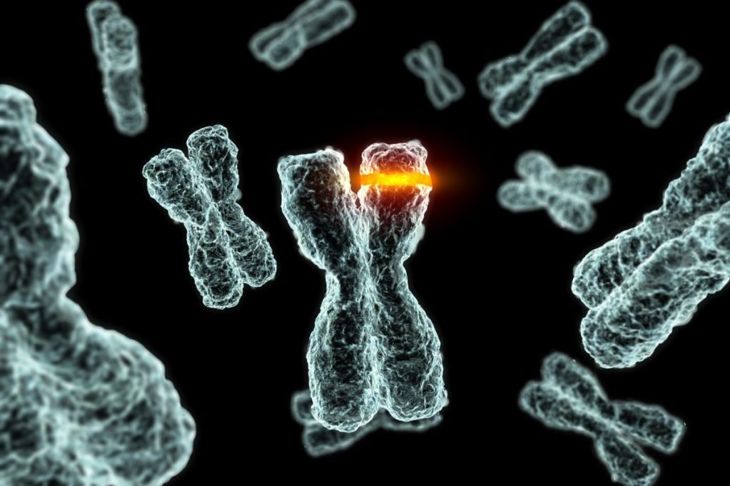Anencephaly is a congenital disability in which a baby’s brain and skull do not fully form while in the mother’s womb. According to the Centers for Disease Control and Prevention, anencephaly occurs in three out of every 10,000 pregnancies in the United States. Approximately 75% of babies with anencephaly are stillborn. Other times, a baby survives a mere few hours to a few days after being born.
What is Anencephaly?
Anencephaly is a neural tube defect or NTD. The upper part of the neural tube helps form the baby’s brain and skull while the lower part of the neural tube helps form the baby’s spinal cord and backbones while she is in her mother’s womb. Anencephaly occurs when the upper part of the neural tube fails to close all the way. As a result, the baby is often born without her forebrain or cerebrum, which is responsible for controlling motor movements, processing sensory information, and producing language. In addition, the remaining parts of the baby’s brain may remain uncovered by bone or skin.
How Frequently Does Anencephaly Occur?
The Centers for Disease Control and Prevention estimate that anencephaly affects approximately three out of 10,000 pregnancies per year. This means that each year in the United States, the condition affects approximately 1,206 unborn babies. Often, a pregnancy involving a neural tube defect ends in miscarriage. Stillbirths account for many of the babies who are carried to term.
What Causes Anencephaly?
The reason most infants develop anencephaly is unknown. Some develop the condition due to gene or chromosome mutations. In the majority of cases, the baby’s family doe not have any history of anencephaly. The mother’s contact with certain environmental factors, such as toxins, medications, and even food and drinks, may also play a part in anencephaly. However, scientists do not currently know enough about these potential risk factors to extend any warning or guidelines to pregnant women. Exposure to high temperatures from a high fever or a hot tub or sauna may increase the risk of neural tube defects. Additionally, the Cleveland Clinic asserts that specific prescription medications, including those for diabetes, may increase the risk of anencephaly. An inadequate intake of folic acid during pregnancy is a significant risk factor for having a baby with anencephaly or other neural tube defects.
Diagnosing Anencephaly During Pregnancy
Doctors can diagnose anencephaly during pregnancy through prenatal screening tests.
Blood Test
Elevated levels of alpha-fetoprotein, a liver protein, can indicate anencephaly.
Ultrasound
Sometimes the physical signs of anencephaly can be seen on a sonogram.
Amniocentesis
During an amniocentesis, fluid is drawn from the amniotic sac and studied for markers of abnormal development. Elevated levels of acetylcholinsterase and alpha-fetoprotein are related to neural tube defects.
Fetal MRI Scan
The physical signs of anencephaly may be apparent on a fetal MRI scan as it produces more detailed photos than an ultrasound.
Diagnosing Anencephaly After Birth
A diagnosis of anencephaly can easily be made after a baby is born because the physical defects are visible. Bones are often missing in the back of the head and may also be incomplete on the sides or front of the head. In areas where the skull or scalp are missing, brain tissue may be visible. Anencephaly can also cause folded ears, poor reflexes, and a cleft palate. A baby with anencephaly may also have heart defects.
How is Anencephaly Treated?
There is currently no cure or treatment for anencephaly. If a baby survives birth, the medical team begins supportive measures. He is kept warm and comfortable. Practitioners cover and protect any exposed areas of the brain. Infants who have trouble swallowing receive nutrition via a special bottle.
What is the Prognosis?
Many pregnancies affected by anencephaly end in miscarriage. If a woman gives birth, the baby is stillborn in 75% of cases. If a baby with anencephaly survives birth, she typically only lives a few hours. At most, babies with this congenital disability live for a few days.
How Likely is Another Occurrence?
If a woman has had one baby with anencephaly, her risk of having another with this condition or another neural tube defect increases by four to ten percent. Having two or more babies affected by anencephaly increases the risk of having another by 10 to 13 percent. Couples who have had a child or family history of neural tube defects can consult a genetic counselor to discuss the risk to any future children.
How Can People Prevent Anencephaly?
Getting an adequate amount of folic acid both before and during pregnancy can help prevent neural tube defects. According to the Centers for Disease Control and Prevention, there has been a 28% decrease in the number of pregnancies affected by neural tube defects since the United States began fortifying grains with folic acid.
What are Good Sources of Folic Acid?
The Cleveland Clinic recommends women get 400 micrograms of folic acid both before and during the first trimester of their pregnancies. If a woman has had a baby with a neural tube defect before, she should talk to her doctor about taking higher doses of folic acid during subsequent pregnancies. A woman can get folic acid through a supplement or through the food she eats. Orange juice, leafy green vegetables, oranges, dried beans, and fortified grains such as cereal, pasta, bread, and rice are good sources of folic acid.

 Home
Home Health
Health Diet & Nutrition
Diet & Nutrition Living Well
Living Well More
More




















